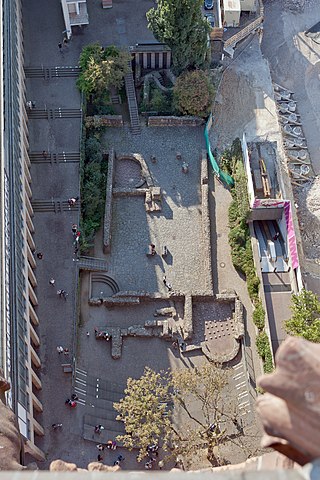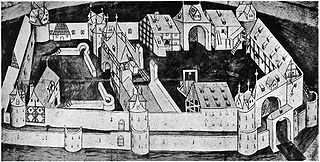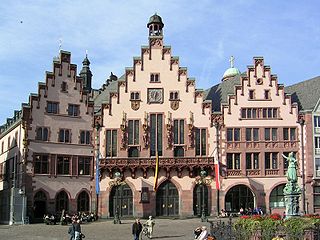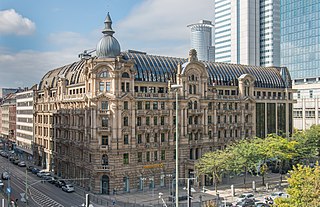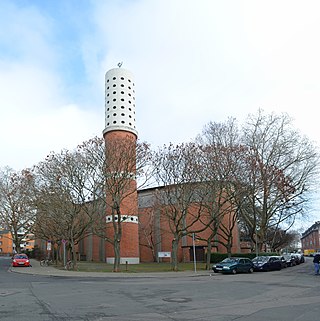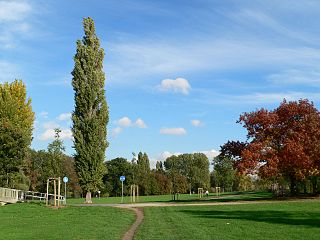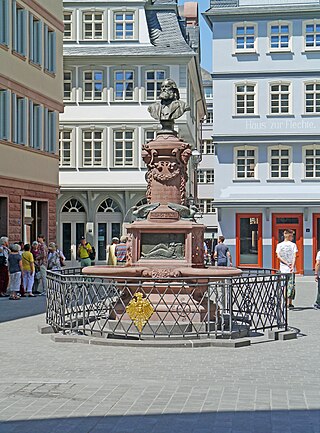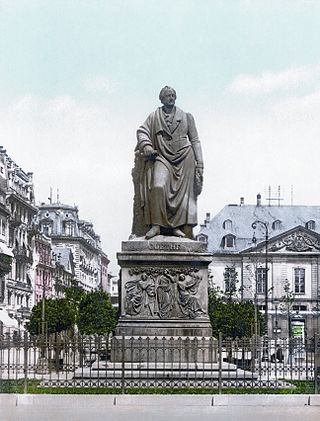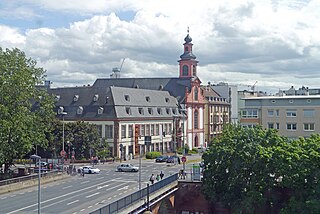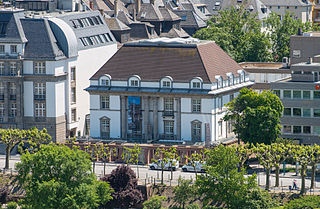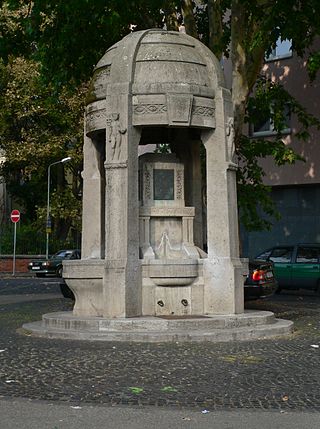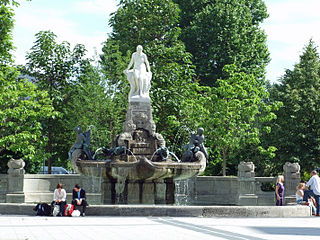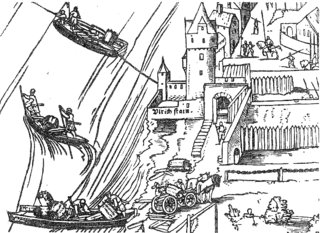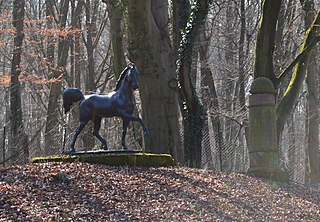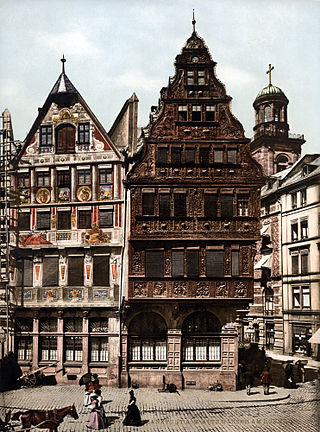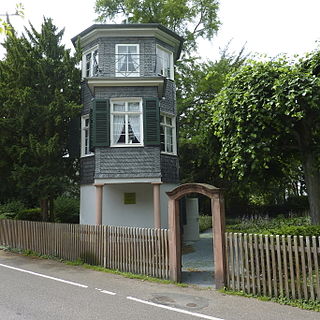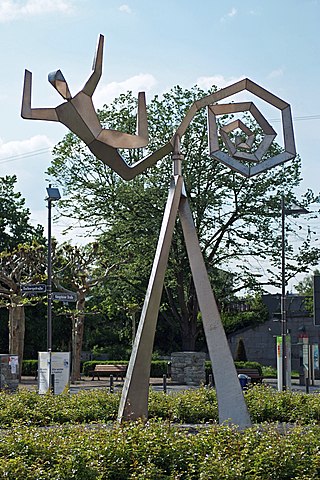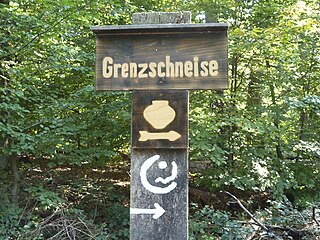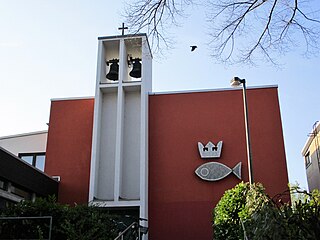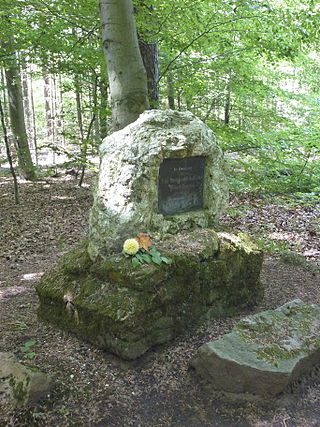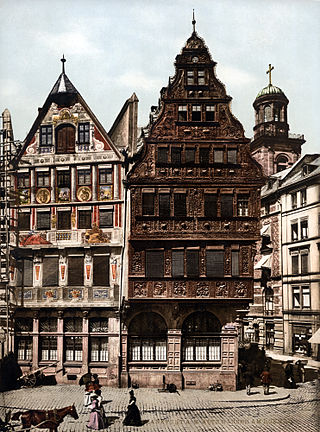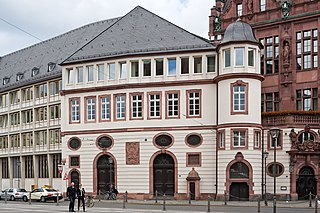100 Sights in Frankfurt, Germany (with Map and Images)
Legend
Premium Sights
Book tickets, guided tours and activities in Frankfurt.
Guided Free Walking Tours
Book free guided walking tours in Frankfurt.
Welcome to your journey through the most beautiful sights in Frankfurt, Germany! Whether you want to discover the city's historical treasures or experience its modern highlights, you'll find everything your heart desires here. Be inspired by our selection and plan your unforgettable adventure in Frankfurt. Dive into the diversity of this fascinating city and discover everything it has to offer.
Sightseeing Tours in FrankfurtActivities in FrankfurtThe Museum für Moderne Kunst, or short MMK, in Frankfurt, was founded in 1981 and opened to the public 6 June 1991. The museum was designed by the Viennese architect Hans Hollein. It is part of Frankfurt's Museumsufer . Because of its triangular shape, the MMK is popularly called the Tortenstück. Since 2018, Susanne Pfeffer has been director of the MMK.
Alte Oper is a concert hall in Frankfurt am Main, Hesse, Germany. It is located in the inner city, Innenstadt, within the banking district Bankenviertel. Today's Alte Oper was built in 1880 as the city's opera house, which was destroyed by bombs in 1944. It was rebuilt in the 1970s as a concert hall with a large hall and smaller venues, opened in 1981. The square in front of the building is still known as Opernplatz.
The Goethe House is a writer's house museum located in the Innenstadt district of Frankfurt, Germany. It is the birthplace and childhood home of German poet and playwright Johann Wolfgang von Goethe. It is also the place where Goethe wrote his famous works Götz von Berlichingen, The Sorrows of Young Werther, and the first drafts of Urfaust. The house has mostly been operated as a museum since its 1863 purchase by the Freies Deutsches Hochstift, displaying period furniture and paintings from Goethe's time in the house.
The Grüneburgpark is a public park in Frankfurt, Hesse, Germany, located in the Westend quarter. It began as a park for the Grüne Burg, a castle from the 14th century. In 1789, the banker Peter Heinrich von Bethmann Metzler acquired the property, and had the park designed. In 1837, the property was bought by the Rothschild family, who erected a palace-like mansion in the style of a French Loire palace. They commissioned Heinrich Siesmayer to develop an English garden, completed in 1877. Under the Nazi regime, Albert von Goldschmidt-Rothschild had to give up his family home. The palace was destroyed in an air raid in 1944.

Rothschild Park is a public park in Frankfurt, Germany. It is located within the central business district known as the Bankenviertel, to the north of the Opera Tower, adjacent to the Opera Square. The park is named for the Rothschild family, a banking family originating in Frankfurt.
The Paulskirche in Frankfurt am Main is a former church building used as an exhibition, memorial and meeting place. It was built between 1789 and 1833 on the site of the medieval Barfüßerkirche, which was demolished in 1786, and served as Frankfurt's main Evangelical Lutheran church until 1944, which is now the Katharinenkirche. From 1848 to 1849, the delegates of the Frankfurt National Assembly, the first parliament for the whole of Germany, met in the classicist rotunda by the architect Johann Friedrich Christian Hess. St. Paul's Church, along with Hambach Castle, is thus considered a symbol of the democratic movement in Germany and a national symbol. From this most important epoch for St. Paul's Church and the history of German democracy, however, there is almost nothing left of the interior decoration.
Wikipedia: Frankfurter Paulskirche (DE), Website, Heritage Website
Die Kleinmarkthalle ist eine 1954 erbaute Markthalle in der Altstadt von Frankfurt am Main. An Werktagen werden von 63 Händlern in 156 Marktständen auf ungefähr 1.500 Quadratmetern Fläche etwa 5000 Produkte, hauptsächlich frische Lebensmittel, aber auch Non-Food-Artikel angeboten. Neben regionalen Spezialitäten, wie zum Beispiel Frankfurter Grüne Soße, gehören heute auch importierte Lebensmittel zum Sortiment. Ebenso betreiben einige Händler Imbiss-Stände in und vor der Halle. Die Kleinmarkthalle zieht vor allem am Samstag Besucher aus dem ganzen Rhein-Main-Gebiet an. Sie wird zudem touristisch vermarktet, beispielsweise im Rahmen von Stadtführungen.
8. Senckenberg Naturmuseum
The Naturmuseum Senckenberg (SMF) is a museum of natural history, located in Frankfurt am Main. It is the second-largest of its kind in Germany. In 2010, almost 517,000 people visited the museum, which is owned by the Senckenberg Nature Research Society. Senckenberg's slogan is "world of biodiversity". As of 2019, the museum exhibits 18 reconstructed dinosaurs.
9. Gerechtigkeitsbrunnen
The Fountain of Justice is a fountain on the Römerberg in Frankfurt am Main and one of the city's landmarks. It goes back to a predecessor building from 1543 on the same site and was built in its present form in 1611. During the time of the Holy Roman Empire, it played a special, albeit short-lived, role during the coronation ceremony as a wine fountain for the emperor and then also for the people. The fountain that can be seen today is a largely detailed copy from 1887, which was financed by the Frankfurt wine merchant Gustav D. Manskopf. It is a listed building.
Wikipedia: Gerechtigkeitsbrunnen (Frankfurt am Main) (DE), Heritage Website
10. Gartenflügel
The Städel, officially the Städelsches Kunstinstitut und Städtische Galerie, is an art museum in Frankfurt, with one of the most important collections in Germany. The museum is located at the Museumsufer on the Sachsenhausen bank of the River Main. The Städel Museum owns 3,100 paintings, 660 sculptures, more than 4,600 photographs and more than 100,000 drawings and prints. It has around 7,000 m2 (75,000 sq ft) of display and a library of 115,000 books.
11. Saalhof
The Saalhof – with the Rententurm, the former customs office, on its west side – is the oldest surviving building in the old town of Frankfurt am Main. The beginnings date back to the end of the 12th century, when a residential tower with a two-storey residential building adjoining it to the north was built in connection with the neighbouring older royal palace of Frankfurt. From 1200 onwards, the residential tower was extended to the east by a chapel extension.
12. Liebieghaus Skulpturensammlung
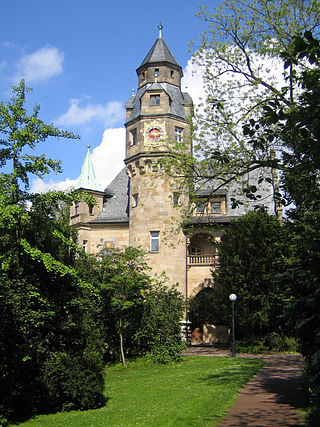
The Liebieghaus is a late 19th-century villa in Frankfurt, Germany. It contains a sculpture museum, the Liebieghaus Skulpturensammlung, which is part of the Museumsufer on the Sachsenhausen bank of the River Main. The collection comprises some 3,000 sculptures, spanning over 5,000 years of culture.
13. Verkehrsmuseum Frankfurt am Main
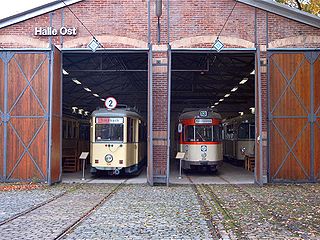
The Frankfurt am Main Transport Museum is a transport museum in the Frankfurt district of Schwanheim, Germany, dedicated to the history of urban transport in Frankfurt am Main and the Rhine-Main region. The museum is also the company museum of Stadtwerke Frankfurt am Main and Verkehrsgesellschaft Frankfurt (VGF). It is part of the Rhine-Main Industrial Heritage Route. Since the beginning of 2022, the museum has been closed until further notice due to deficiencies in fire protection. A renovation of the West Hall and demolition with a new building are being discussed.
14. Lohrberg
The approximately 185-metre-high Lohrberg, or Lohr for short, is considered the local mountain of Frankfurt am Main and is also the only remaining vineyard within the city area. It belongs to the district of Seckbach and is part of the geological formation of the Berger Ridge, which extends in the form of a flat U from Berkersheim to beyond the end of Bergen - ending in Maintal-Bischofsheim. At the Berger Warte, the highest point in the city area is 212.4 metres above sea level.
15. Charlemagne statue
Alte Brücke is a bridge in Frankfurt, Hesse, Germany. It is the oldest bridge over the lower course of the river Main, and until 1886 was the only stone bridge crossing the river. From the Middle Ages until the year 1914, it connected the "Fahrgasse" in Frankfurt Altstadt with the "Brückenstraße" in Sachsenhausen. Since its first mention in official documents in 1222, the development of Frankfurt has been strongly influenced by the bridge. Over the centuries, Alte Brücke has been destroyed and reconstructed at least 18 times. With its 13 brick-built circular arches, the Sachsenhausen Bridge was one of the most prominent buildings of the city, but failing to meet the increasing demands of the modern road and ship traffic, it was demolished in 1914.
16. Rebstockpark
The Rebstock site is an area in Frankfurt am Main in the Bockenheim district. The 100-hectare site, formerly one of the first airports in Germany, is now characterized by the Volkspark am Rebstock, which opened in 1962, and the adventure pool, which opened in 1982. Since 2002, the construction of a new residential district on the eastern edge, which also uses the name Rebstockpark, has created living space for around 4,500 people. In the meantime, Rebstockpark also attracts companies from various industries.
17. St. Josefskirche
St. Josef in Frankfurt-Bornheim is one of three churches in Frankfurt that are dedicated to the patron saint Joseph of Nazareth. It is the parish church of the new type of Catholic parish of St. Josef Frankfurt am Main, to which three other churches belong as church places and in which there are also two profile churches of the Diocese of Limburg, which are also branch churches of the parish. Like the other two Josefskirchen in Frankfurt am Main, the sacred building is located in the Diocese of Limburg.
18. Steinernes Haus
The Steinernes Haus, also known as Haus Bornfleck in older literature, is a historic building in the old town of Frankfurt am Main. It faces the market, which connects the cathedral with the Römerberg. Above all, its medieval architecture and its very long, well-documented history make it stand out from other buildings in the old town.
19. Volkspark Niddatal
With 168 hectares, Volkspark Niddatal is the largest and most visited green space in Frankfurt am Main and Frankfurt's second largest green space after the Stadtwald. It is named after the Nidda, which flows through it in the north. The character of Niddapark is an extensive natural floodplain landscape. In memory of the Federal Garden Show in 1989, it is also called the BUGA site in Frankfurt vernacular. The park and the Federal Garden Show were designed by landscape architect Norfried Pohl. Since 1991, Niddapark has been part of Frankfurt's green belt.
20. Heinrich Hoffmanns Eiskeller
The Ice Cellar is a historic building on the former Affensteiner Feld in Frankfurt am Main. It is now located on the Westend campus of the University of Frankfurt in the northeastern part of the campus in the corner of Hansaallee and Lübecker Straße. The building was conserved and integrated into the Social Sciences and Psychology Library (BSP).
21. Haus Leonhardsbrunn
The list of cultural monuments in Frankfurt-Westend lists all cultural monuments within the meaning of the Hessian Monument Protection Act in Frankfurt-Westend, a district of Frankfurt am Main. Due to its size, the list is divided into two partial lists.
Wikipedia: Liste_der_Kulturdenkmäler_in_Frankfurt-Westend_(L–Z) (DE)
22. Schelmenburg
The Schelmenburg, also known as the Schelmenschloss or Gruckau, was a medieval moated castle in today's Frankfurt-Bergen-Enkheim in Hesse. For several centuries it was the ancestral castle of the Schelme von Bergen. Today, a baroque moated castle is still preserved from the Schelmenburg, which was built in 1700 on the foundation walls of the former core castle.
23. St. Catherine's Church
St. Catherine's Church is the largest Protestant church in Frankfurt am Main, Germany. It is a parish church in the old city centre near one of the most famous city squares, the Hauptwache. The church is dedicated to the martyred early Christian saint Catherine of Alexandria.
Wikipedia: St. Catherine's Church, Frankfurt (EN), Url, Heritage Website
24. Station 2 Wäldchestag
Wäldchestag is the name of the Tuesday after Pentecost in Frankfurt am Main, on which a traditional folk festival takes place at the Oberforsthaus in Frankfurt's city forest. The festival site is located in the Niederrad district near the Waldstadion. Until the 1990s, most Frankfurt shops were closed on this day in the afternoon, and employees had the day off from 12 noon. That's why the Wäldchestag was jokingly called Frankfurt's national holiday in the vernacular.
25. Berger Warte
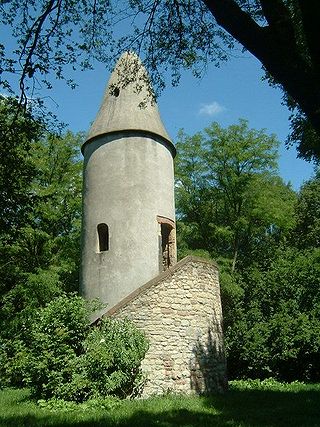
The Berger Warte is a watchtower built in the middle of the 16th century, about 12 meters high, made of red Main sandstone. The tower with a circular floor plan stands at the highest point of today's urban area of Frankfurt am Main, in the municipal area of its eastern district of Seckbach. There it is located on the border with the Bergen-Enkheim district, a few meters west of the federal highway 521, on the Berger Rücken low mountain range.
26. Greiffenclausches Haus
Frankfurt-Höchst has a whole series of historical buildings, especially in its old town with its floor area of approx. 75,000 m² (7.5 ha), which bear witness to a long history of the city of Höchst am Main, which was independent until 1928. Despite some serious fires in the city, including the two major city fires of 10 December 1586 and 24 September 1778, and devastation during the Thirty Years' War, many old buildings have survived the centuries. Even in the Second World War, there was relatively little war damage in Höchst, 53 houses were damaged or destroyed. The historic old town was preserved. It contains many architectural and cultural monuments, including around 400 half-timbered houses, see List of cultural monuments in Frankfurt-Höchst.
27. Hauptwache
The Hauptwache is a central point of Frankfurt am Main and is one of the most famous plazas in the city. The original name Schillerplatz was superseded in the early 1900s. It lies to the west of Konstablerwache with both squares linked by the Zeil, the central shopping area of the city.
Wikipedia: Hauptwache (Frankfurt am Main) (EN), Heritage Website
28. Altes Schloß
The Höchst Castle was the residence of the officials of the Archbishopric of Mainz in the former city of Höchst am Main, today a district of Frankfurt am Main. It consists of the Old Castle, built in the 14th to 16th centuries, and the New Castle, built at the end of the 16th century. Both are now owned by the German Foundation for the Protection of Monuments. Since 1957, the Höchst Castle has been the focus of the Höchst Castle Festival every year.
29. Villa Speyer
The Villa Kennedy is a hotel complex around the historic Villa Speyer in Frankfurt am Main. From 2006 to 2022, it was used as a luxury hotel, and a continuation from summer 2025 as the Althoff Hotel under the new name The Florentin is planned.
30. Ensemble Modern
Ensemble Modern is an international ensemble dedicated to performing and promoting the music of contemporary composers. Formed in 1980, the group is based in Frankfurt, Germany, and made up variously of about twenty members from numerous countries.
31. Holzhausenschlösschen
The Holzhausenschlösschen is a moated former country house built by the patrician Holzhausen family on their farm, then just north of Frankfurt and now in the city's Nordend. The present building was completed in 1729, built for Johann Hieronymus von Holzhausen on the foundations of a moated castle from the Middle Ages after a design by Louis Remy de la Fosse. Today, it serves as a venue for cultural events.
32. Stalburger Oede
The Stalburger Oede, previously also known as Ödenburg, was one of numerous medieval aristocratic and patrician residences in the district of Frankfurt am Main. The moated castle, which was at least temporarily adjoined by gardens, meadows, ponds and a vineyard, was located at the level of today's Glauburgstraße in the Frankfurt-Nordend district.
33. Elisabethenschule
The Elisabethenschule is a grammar school in Frankfurt am Main, in the Nordend district. The school was named after Catharina Elisabeth Goethe (1731–1808), the mother of Johann Wolfgang von Goethe (1749–1832).
34. Museum Angewandte Kunst
The Museum Angewandte Kunst (MAK) is located in Frankfurt am Main, Germany, and is part of Frankfurt's Museumsufer. The alternating exhibitions recount tales of cultural values and changing living conditions. Beyond that, they continually refer to the question of what applied art is today and can be and demonstrate the field of tension between function and aesthetic value.
35. Portikus
Portikus is an exhibition institution for contemporary art in Frankfurt am Main. It was opened in 1987 in a container room behind the classicist columned frontispiece of the Old City Library and has been located on the Main Island at the Old Bridge since 2006. In addition to current works by internationally renowned artists, positions by young artists will also be shown. Since its founding in 1987, Portikus has been an integral part of the Städelschule and contributes to the enrichment of the curriculum and the international reputation of the school. From October 2014 to the end of 2017, Fabian Schöneich was curator of Portikus, followed by Christina Lehnert, who most recently headed the Braunschweiger Kunstverein. On July 1, 2022, the curatorial duo Liberty Adrien and Carina Bukuts took over the management.
36. Bürgerhospital Frankfurt
The Bürgerhospital is a hospital in Frankfurt am Main, Germany. Since 1903, it has been located in the densely populated district of Nordend on Nibelungenallee, not far from the German National Library. The academic teaching hospital of the University Hospital Frankfurt operates one of the women's clinics with the highest birth rate in Germany and has, among other things, a neonatal pediatric intensive care unit as well as pediatric surgery and provides special care for expectant mothers with high-risk and multiple pregnancies. The hospital is also known nationwide for its specialization in thyroid surgery.
37. Bolongaropalast
The Bolongaropalast is a large baroque palace in Frankfurt-Höchst. It is located on the south side of Bolongarostraße, the south-facing garden is located on the high bank above the confluence of the Nidda and the Main.
38. Kontinuität
The sculpture Continuity by Max Bill is a major work of the Zurich School of Concrete Art and was commissioned by Deutsche Bank for the forecourt in front of the twin towers of its headquarters on the Taunusanlage in Frankfurt am Main.
39. Matthäuskirche

St. Matthew's Church is a Protestant church in Frankfurt am Main, Germany. It is located in the Gallus district between the exhibition grounds and the main train station on the west side of the Friedrich-Ebert-Anlage.
40. Gedenkstätte Arbeitserziehungslager Heddernheim
The Heddernheim labour education camp was the only labour education camp in Frankfurt am Main during the National Socialist era. It was located in the excavated clay pit of a former brickyard on the northern edge of the Frankfurt district of Heddernheim on the corner of Oberschelder Weg and Zeilweg. Since 1986, a small memorial has commemorated the existence of the camp.
41. Tigerpalast
The Tigerpalast is a variety theatre in Frankfurt am Main, founded in 1988 by Johnny Klinke, Margareta Dillinger and Matthias Beltz. As a venue, it uses a former meeting hall of the Salvation Army in Heiligkreuzgasse, a small street parallel to the Zeil in the northeastern city center.
42. Dreikönigskirche
The Dreikönigskirche is a Lutheran Protestant church and parish in Frankfurt, the city's largest Protestant parish. It is located on the south bank of the Main in Sachsenhausen, opposite the Frankfurt Cathedral. The present church building, replacing an older church, was erected from 1875 to 1880 on designs by Franz Josef Denzinger in Gothic revival style. It features stained glass windows by Charles Crodel, installed in 1956, and an organ by Karl Schuke from Berlin completed in 1961.
43. Wartweg-Gruppe
The Kelsterbach Terrace is a river terrace in the Lower Main plain south of Frankfurt am Main, which was formed in the Old and Middle Pliocene, is now 12 to 17 metres high and eight kilometres long. The terrace is an Ice Age remnant of the former riverbed of today's Main River. The slope of the terrace, which slopes moderately steeply from south to north, is the only terrain step in Frankfurt's city forest. Several burial mounds and archaeological finds on site bear witness to the human use of the Kelsterbach Terrace in the Stone Age and Bronze Age up to the Iron Age. Along the upper edge of the terrace runs the Grenzschneise, the oldest known road connection in Frankfurt.
44. Justinuskirche
The Carolingian Saint Justin's Church in Frankfurt-Höchst is the oldest building in Frankfurt/Main and one of the oldest churches still existing in Germany. It is dedicated to Saint Justin the Confessor.
45. Kellertheater Frankfurt
The Kellertheater Frankfurt is an independent, completely volunteer-run theater in Frankfurt am Main. It has been located at Mainstraße 2 since 1980. It is run by the Junge Bühne Frankfurt e. V. and has been entered in the register of associations since 1975. The Kellertheater is a member of the Frankfurter Theaterallianz e. V.
46. Sankt Antonius
St. Antonius is a Roman Catholic church in Frankfurt am Main, Germany. It was built in 1899/1900 in the neo-Gothic style in the Westend district. After its destruction in the Second World War and reconstruction, it served as the parish church of the parish of St. Antonius. From 1 September 2007 to 31 December 2013 it was a branch church of the parish of St. Ignatius and St. Antonius, and since 1 January 2014 it has been a church of the cathedral parish of St. Bartholomew. It is not to be confused with the Antoniuskirche in the Frankfurt district of Rödelheim.
47. Weißfrauen Diakoniekirche Frankfurt
The Weißfrauenkirche was a Protestant church in the old town of Frankfurt am Main. It burned down after a bombing raid on March 22, 1944. Its remains were removed during reconstruction in 1952 in favor of the street breakthrough of Berliner Straße. In 1955/56, a new Weißfrauenkirche was built west of the city centre in the station district, which was rededicated to a diaconal church in 2002/04.
48. Amerika-Haus
Westend-Nord and Westend-Süd are two city districts of Frankfurt am Main, Germany. The division into a northern and a southern part is mostly for administrative purposes as the Westend is generally considered an entity. Both city districts are part of the Ortsbezirk Innenstadt II.
Wikipedia: Westend (Frankfurt am Main) (EN), Heritage Website
49. Aequatorial-Sonnenuhr
The Frankfurt Equatorial Sundial, sometimes also referred to as a copper clock, is a ring-shaped equatorial sundial designed as a world clock. Since 2004, it has stood in Frankfurt's inner city district on a green area west of the Ignatz Bubis Bridge on the banks of the Main below the Schöne Aussicht. When it was inaugurated in 1951, the Frankfurt Equatorial Sundial was considered the largest sundial of its kind in the world.
50. Eisenbahnbrücke Nied
The Nied Railway Bridge in Frankfurt am Main is the second oldest railway bridge in Germany still in operation. The arch bridge was built in 1838 and went into operation in 1839. The Taunus Railway crosses the Nidda on it. The bridge is located between Frankfurt Central Station and Frankfurt-Höchst station in the Nied district.
51. Westend Synagoge
Built between 1908 and 1910, the Westend Synagogue is the largest synagogue in Frankfurt am Main and the spiritual center of the city's Jewish community life. It was the only one of the former four large synagogues to survive the November pogroms of 1938 and the bombing raids of the Second World War badly damaged. Until the demise of Jewish life in Frankfurt during the National Socialist era, it served as a place of worship for the liberal reform wing. It was re-inaugurated in 1950 after provisional renovation and restored true to the original from 1989 to 1994.
52. Garten des himmlischen Friedens
The Garden of Tiananmen is a Chinese garden in Frankfurt am Main, Germany. It is part of the Bethmannpark in the Nordend, the main entrance is near the entrance to the Bethmannpark at the beginning of Berger Straße.
53. Leopold's Column
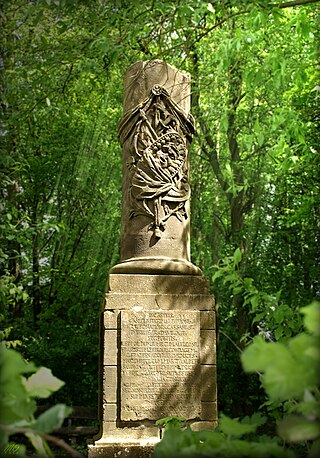
The Leopold Column in Frankfurt am Main-Seckbach is a memorial to Emperor Leopold II erected in 1790. The column stands on the edge of the site of a substation on the Berger Rücken ridge in the northeast of Frankfurt. Since 1991, the surrounding area has been part of Frankfurt's green belt.
54. Rententurm
The Rententurm is a late Gothic gate tower of the former city fortifications of Frankfurt am Main and part of the Saalhof. The tower secured the gate, which, as Frankfurt's most important city gate on the Main side, connected the centre of the historic city centre, the Römerberg, with the harbour on the banks of the Main outside the city wall. Opposite the Rententurm on the Mainkai has been the northern bridgehead of the Eiserner Steg since 1869.
55. Altes Volksbildungsheim
The Volksbildungsheim is a listed building at the Eschenheimer Tor in Frankfurt am Main with the address Eschenheimer Anlage 40. The name is a reminder of its many years of use as an education and event centre of the Frankfurter Bund für Volksbildung. From 1963 to 1995, the Theater am Turm was located here. Today, behind the preserved façade is the CineStar Metropolis, which is used as a multiplex cinema. The cinemas are operated by the CineStar Group.
56. Gutenberg-Denkmal
The Johannes Gutenberg Monument is a monument and fountain on the Roßmarkt in Frankfurt am Main. It commemorates the inventor of printing with movable metal letters, Johannes Gensfleisch, known as Gutenberg, as well as the printers and publishers Johannes Fust and Peter Schöffer, who worked with him in Frankfurt.
Wikipedia: Gutenberg-Denkmal (Frankfurt am Main) (DE), Website, Heritage Website
57. Dommuseum
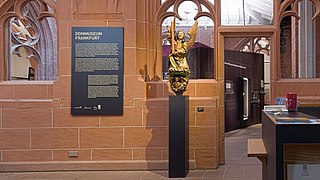
The Frankfurt Cathedral Museum shows ecclesiastical treasure art, a rich collection of medieval and baroque chasubles and important exhibits on the Frankfurt Imperial Cathedral, from early medieval excavation finds to evidence of its historicist redesign in the 19th century. The Cathedral Museum in the historic cloister of the Imperial Cathedral of St. Bartholomew in Frankfurt am Main has been in existence since 1987. The regular exhibition contains some highlights of sacred art. In addition, the museum presents contemporary art or cultural-historical topics in changing exhibitions. Since 2007, a second exhibition space has been the so-called Sacristeum in the neighbouring Haus am Dom.
58. Alte Stadtbibliothek
The Alte Stadtbibliothek is a neoclassical building in Frankfurt am Main, Germany. Destroyed by aerial bombs during the air raids on Frankfurt am Main during the Second World War, only the portico remained. It was not until 2003 that the reconstruction was decided. Since 2005, the Alte Stadtbibliothek has been used by the Literaturhaus Frankfurt.
59. Die Schmiere
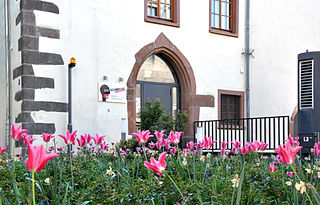
The cabaret Die Schmiere was founded in 1950 by Rudolf Rolfs and is one of the oldest private theatres in Frankfurt am Main. The theatre describes itself as "The worst theatre in the world"; the name "Schmiere" is also a pejorative term for bad theatre, a so-called smear theatre.
60. Allerheiligenkirche
The All Saints' Church is a Catholic church in the Ostend district of Frankfurt, Germany. Since 2014, the All Saints' parish has been a church of the cathedral parish of St. Bartholomew and is known in particular as the KunstKulturKirche of Frankfurt's city centre.
61. Theater Willy Praml
The Willy Praml Theatre was founded in 1991 by Willy Praml and Michael Weber as an independent theatre in Frankfurt am Main. The theatre works with a professional ensemble. Since 2000, the Willy Praml Theatre has been located in the Naxoshalle in Frankfurt's Ostend.
62. Sankt Ignatius
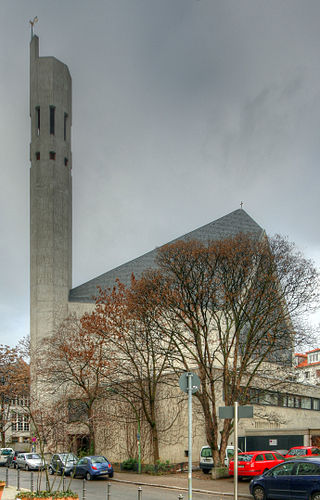
St. Ignatius is a Roman Catholic church in Frankfurt am Main, Germany. The current church, consecrated in 1964, is the work of the important church builder Gottfried Böhm. Originally the parish church of the parish of St. Ignatius, which has existed since 1930, the Ignatius Church has been a rectorate church of the new cathedral parish of St. Bartholomew since 2014 after the merger of the Catholic inner city parishes.
63. Zeppelinallee
Zeppelinallee in Frankfurt am Main is an avenue in the districts of Frankfurt-Bockenheim and Westend-Nord. At the beginning – up to the junction with Ludolfusstraße – it is part of the Alleenring and district boundary. It includes a large number of listed houses, mostly in neoclassical style, and has a park-like median strip from the middle.
64. Historical Museum Frankfurt
The Historical Museum in Frankfurt am Main, Germany, was founded in 1878, and includes cultural and historical objects relating to the history of Frankfurt and Germany. It moved into the Saalhof in 1955, and a new extension was opened in 1972.
65. Bockenheimer Depot
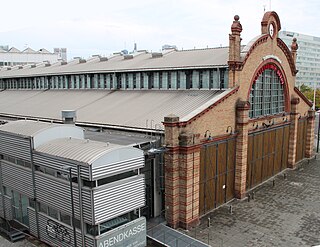
The Bockenheimer Depot is a former tram depot and main workshop of the Straßenbahn Frankfurt am Main, built around 1900. It is located in the Bockenheim quarter of Frankfurt. A listed monument, it now serves as a theatre venue of the Städtische Bühnen Frankfurt, mostly for Baroque and contemporary opera.
66. Gedenkstätte Neuer Börneplatz
The Neuer Börneplatz Memorial Site, also called Börneplatz Memorial Site, in Frankfurt am Main commemorates the Jewish community of Frankfurt that was destroyed in the Holocaust. It was opened to the public on 16 June 1996.
67. Liebfrauenkirche
Liebfrauenkirche is a Gothic-style Catholic parish church, located in the centre of Frankfurt, Germany. It was built in several phases from the 14th to the 16th century and serves today as a monastery church. Close to the shopping district, it serves as a place of rest even to visitors who are not religious. With an organ completed in 2008, it is a major venue for church music events.
68. Kuhhirtenturm (Elefant)
The Kuhhirtenturm is a defensive tower in the late Gothic style in the city of Frankfurt am Main. It was built in the late 14th century in the Frankfurt district of Sachsenhausen as part of Frankfurt's city fortifications and served until the 17th century as a gatehouse and to protect the bank fortifications of the River Main.
69. Kaiserpfalz franconofurd
The former Archaeological Garden in Frankfurt am Main was built in 1972/73 during the construction of the Dom/Römer underground station. As part of the Dom-Römer project, the Archaeological Garden was built over with the Stadthaus am Markt from 2013 to 2016 in order to protect the excavations from the weather and to keep them permanently accessible. In August 2018, the exhibition was reopened in the basement of the Stadthaus as a branch of the Archaeological Museum Frankfurt under the new name Kaiserpfalz Franconofurd. It presents in a new architectural and museum design the remains of the Roman settlement on the Frankfurt Cathedral Hill, of a Merovingian royal court, of the Carolingian-Ottonian royal palace of Frankfurt, as well as late medieval cellar.
70. Rödelheimer Schloss
Rödelheim Castle was initially a medieval castle complex in Frankfurt-Rödelheim, in the area of which the Counts of Solms-Rödelheim later had a castle built. Today, the complex has almost completely disappeared and its history can only be explored through archival sources and old views.
71. Haus zum Römer
The Haus zum Römer, also known as Römer, is the eponymous middle house of the three-gable façade of the Frankfurt City Hall complex. It was first mentioned in 1322 and was bought by the city in 1405. Probably built in the early 14th century, it is architecturally still a representative of classical Gothic patrician architecture, despite massive exterior and interior alterations in the more than 700 years after its construction.
72. Fürstenhof
The Fürstenhof, formerly Hotel Fürstenhof-Esplanade, is a neo-baroque building built in 1902 in Frankfurt am Main. It has a usable area of around 18,450 square metres and is located in the station district between Münchener Straße, Gallusanlage and Kaiserstraße. The building, which was renovated in 1992 by the real estate investor Jürgen Schneider, is leased to Commerzbank on a long-term basis. From 1994, Dresdner Bank, which was merged with Commerzbank in May 2009, had used it as the parent company for its private customer business.
73. Sankt Michael
St. Michael is a Roman Catholic church in the Nordend district of Frankfurt am Main. Since 2007, it has been a branch church of the parish of St. Josef Frankfurt am Main and, as a profile church, the centre for grief pastoral care of the Diocese of Limburg. The church is a cultural monument according to the Hessian Monument Protection Act.
74. Wörthspitze
The Wörthspitze is a park in the Frankfurt district of Nied. It is part of Frankfurt's green belt, which has its starting point here. The large lawn of the Wörthspitze serves as a public dog run and is used as a sunbathing lawn and play area in summer.
75. Stoltze-Brunnen
The Stoltze Fountain is a fountain built in the 1890s on the Hühnermarkt in the old town of Frankfurt am Main; it is a listed building. During the reconstruction of the Römer, from 1981 to 2016, it stood on Friedrich-Stoltze-Platz behind St. Catherine's Church▼.
76. Trauerhalle
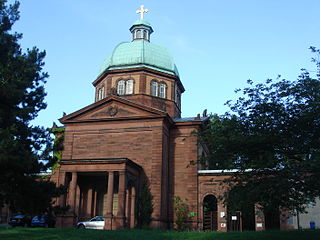
The Südfriedhof is a cemetery in Frankfurt am Main in the district of Sachsenhausen. The cemetery was opened in 1868 as a replacement for the closed Old Sachsenhausen Cemetery in Brückenstraße/Schifferstraße.
77. Goethedenkmal
The Goethe monument on Goetheplatz in Frankfurt am Main is the work of the sculptor Ludwig Schwanthaler. It was ceremoniously inaugurated on October 22, 1844. Johann Wolfgang von Goethe, born in Frankfurt in 1749, is considered the most important son of the city. Even during his lifetime, he was glorified as the German national poet. It was considered a symbol of German unification. Frankfurt was the first city in which a public Goethe monument was erected in his honor. There had been several monument projects in Frankfurt since 1819.
Wikipedia: Goethedenkmal (Frankfurt am Main) (DE), Website, Heritage Website
78. Noor Mosque
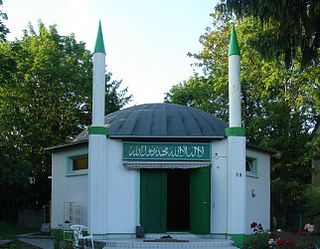
The Noor Mosque in Frankfurt-Sachsenhausen is the third purpose-built mosque in Germany. The mosque in Babenhäuser Landstraße is run by the Ahmadiyya Muslim Community (AMJ) and was inaugurated on September, 12th 1959 by Sir Muhammad Zafrulla Khan.
79. Ikonen-Museum
The Icon Museum is a museum for sacred art of Orthodox Christianity in Frankfurt am Main. It is located in the baroque building of the Teutonic Order House and forms the eastern end of the Museum Embankment. It is affiliated with the Museum of Applied Arts, and is run by the city of Frankfurt am Main.
80. Deutsches Architekturmuseum
The German Architecture Museum (DAM) is located on the Museumsufer in Frankfurt, Germany. Housed in an 18th-century building, the interior has been re-designed by Oswald Mathias Ungers in 1984 as a set of "elemental Platonic buildings within elemental Platonic buildings". It houses a permanent exhibition entitled "From Ancient Huts to Skyscrapers" which displays the history of architectural development in Germany.
81. Brüningbrunnen
The Brüning Fountain in Frankfurt-Höchst was inaugurated in 1916. It stands in the northeast corner of the Höchst Markt, bordered northeast by Justinuskirchstraße and northwest by Melchiorstraße. It honors the citizen Adolf von Brüning and his wife, who had created the Höchst works in the city and were charitable.
82. Schäfersteinpfad
The Schäfersteinpfad is a historic border trail from the 15th century in the city of Frankfurt am Main. Since 1484, the path has marked the boundary of two wooded areas (Hutewald) in the Frankfurt city forest used as cattle pasture - that of the city of Frankfurt and that of the Commandery of the Teutonic Order resident in Sachsenhausen. Since the 20th century, the Schäfersteinpfad has been used as a circular hiking trail. It leads along the boundary stones from the late 15th century, which have been preserved at their historic locations.
83. Zoo Frankfurt
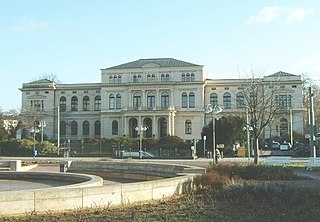
The Frankfurt Zoological Garden is the zoo of Frankfurt, Germany. It features over 4,500 animals of over 510 species on more than 11 hectares. The zoo was founded in 1858 and is the second oldest zoo in Germany, after Berlin Zoological Garden. It lies in the eastern part of the Innenstadt. Bernhard Grzimek was director of the zoo after World War II from 1945 until 1974.
84. Geldmuseum
The Money Museum of the Deutsche Bundesbank in Frankfurt's Bockenheim district is the only money museum in Germany. It aims to contribute to the understanding of the monetary system in its many aspects. The museum opened in 1999 and was last visited by around 40,000 visitors a year before it was closed for two years in 2014 for modernization.
Wikipedia: Geldmuseum der Deutschen Bundesbank (DE), Website
85. Märchenbrunnen
The Märchenbrunnen or Schauspielhausbrunnen in Frankfurt am Main is located on the Untermainanlage next to the Städtische Bühnen Frankfurt. It is an Art Nouveau fountain that was completed in 1910.
Wikipedia: Frankfurter Märchenbrunnen (DE), Website, Heritage Website
86. Frankfurter Engel
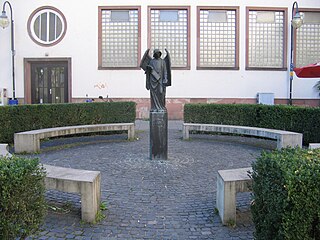
The Frankfurter Engel is a memorial in the city of Frankfurt am Main in southwestern Germany; it is dedicated to homosexual people who were persecuted under Nazi rule, and as well as under Paragraph 175 of the German Criminal Code during the 1950s and 1960s.
87. Mainkur - Ehem. barocke Zollstation
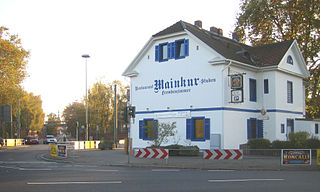
Mainkur is the name of an area on the right bank of the Main in Frankfurt am Main. It is located north of the historic centre of Frankfurt-Fechenheim. The name probably originated in the 18th century.
88. Ulrichstein marking
The Ulrichstein was part of Frankfurt's city fortifications. It was first mentioned in a document in 1391 in the directory of gates and towers, so it was already in the possession of the city at that time as part of the Sachsenhausen city wall.
89. Waldspielpark Louisa
Park Louisa is a 20-hectare wooded area on the edge of Frankfurt's city forest in Frankfurt's Sachsenhausen district. A 2.5-hectare forest play park is integrated into the forest park. Park Louisa is part of Frankfurt's green belt.
90. Salzhaus
The Salzhaus is a historic building in the German city Frankfurt am Main. It forms the northeastern part of the Frankfurt City Hall complex (Römer), on the Römerberg square in the centre of the Altstadt.
91. Willemer Häuschen
The Willemer-Häuschen is a classicist garden house from the early 19th century in Frankfurt am Main. It became known through the encounters of the poet Johann Wolfgang von Goethe with Marianne von Willemer there in 1814. During the Second World War, the original building was largely destroyed in the air raids on Frankfurt am Main and then rebuilt. Today, the house houses a publicly accessible Goethe memorial, which is classified by the Freies Deutsches Hochstift as "one of the two most important Goethe memorials in Frankfurt" next to the Goethe House.
92. Windsbraut
The Bride of the Wind is a steel sculpture by the sculptor E. R. Nele on the Dalbergplatz in Frankfurt-Höchst, which was redesigned in 2007. The artwork was procured for the design of the square on behalf of the city of Frankfurt am Main and installed on 4 April 2008.
93. römischer Brunnen
Attention as of November 17, 2019, the signage of the path is weathered on the first 6 km, incomplete and sometimes no longer recognizable. So it is currently not possible to go the hiking trail without a map or GPS.
94. Bethmannpark
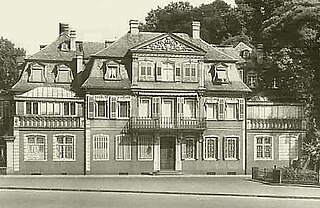
Der Bethmannpark ist eine 3,1 Hektar große Grünanlage in Frankfurt am Main. Der Park liegt in einem Dreieck zwischen Friedberger Landstraße, Berger Straße und Mauerweg im östlichen Teil des Stadtteils Nordend, außerhalb der Wallanlagen. Der Name des Parks leitet sich von der Frankfurter Familie Bethmann ab.
95. Römische Töpferöfen

Nida was an ancient Roman town in the area today occupied by the northwestern suburbs of Frankfurt am Main, Germany, specifically Frankfurt-Heddernheim, on the edge of the Wetterau region. At the time of the Roman empire, it was the capital of the Civitas Taunensium. The name of the settlement is known thanks to written sources from Roman times and probably derives from the name of the adjacent river Nidda.
96. Christ-König
The Roman Catholic Church of Christ the King in Frankfurt's Praunheim district was built in 1930 with the development of the Praunheim estate, a project of the New Frankfurt, and was extensively rebuilt in 1951. It is a cultural monument according to the Hessian Monument Protection Act.
97. Haus Wertheym
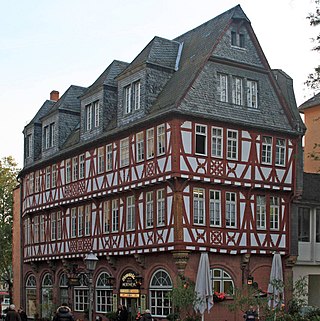
The Wertheim House, also known as Wertheym, is a half-timbered house built around 1600 at the Fahrtor in Frankfurt am Main. It is the only house with exposed half-timbering in Frankfurt's old town that has survived the air raids on Frankfurt am Main almost unscathed. The house is a listed building. Until the destruction of the old town, it received little attention. Today, with its massive ground floor with sandstone arcades, the two cantilevered half-timbered upper floors and the slate attic, it is considered typical of the Frankfurt architectural style. Since the 1970s, its appearance and its status as the last of what used to be more than 1200 half-timbered houses in the old town have contributed to promoting the desire for comprehensive reconstructions of representative old town houses among Frankfurt's citizens.
Wikipedia: Haus Wertheim (Frankfurt am Main) (DE), Url, Heritage Website
98. Mendelssohnruhe
The Mendelssohnruhe is a memorial in honor of composer Felix Mendelssohn Bartholdy (1809–1847) in Frankfurt am Main. The memorial stone with a bronze plaque, donated in 1909 stands in the Frankfurt city forest. He commemorates a festival organized there in July 1839 in honor of Mendelssohn Bartholdys, in which some of his choral works were premiered.
99. Haus Frauenstein
Haus Frauenstein is a historic building in Frankfurt am Main, Germany. It is part of the Römerzeile, Frankfurt's town hall complex. As the fourth building in the row, it borders on the left (south) of the Löwenstein House and on the right (north) of the Salzhaus. The house address is "Römerberg 25".
100. Haus zum Goldenen Schwan
The House of the Golden Swan, also known as the Golden Swan, is a building in the Frankfurt City Hall complex. It borders to the northwest of the eponymous Haus zum Römer and has always been structurally and historically connected to it. First mentioned in 1322, the building was bought by the city in 1405. Architecturally, despite the structural changes of several centuries, it is still a typical representative of Gothic patrician architecture.
Share
How likely are you to recommend us?
Disclaimer Please be aware of your surroundings and do not enter private property. We are not liable for any damages that occur during the tours.
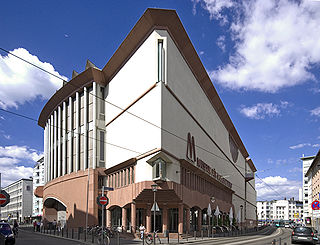

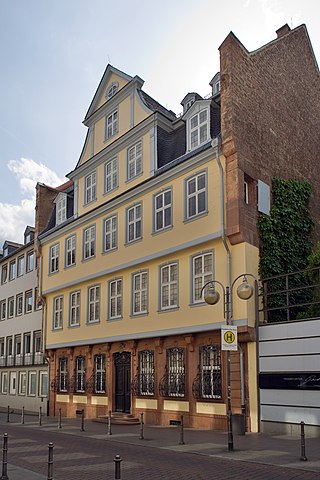
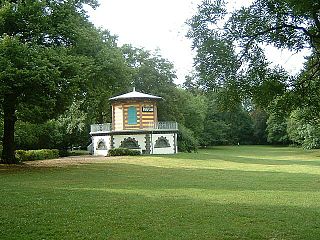
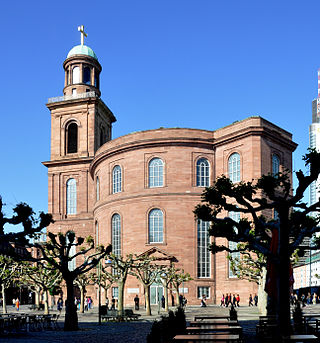
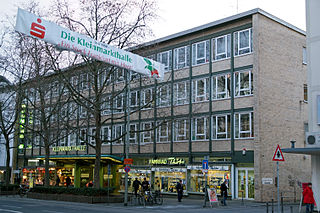
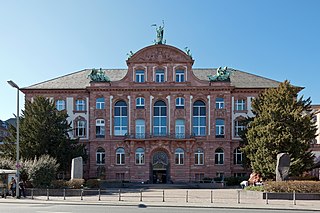
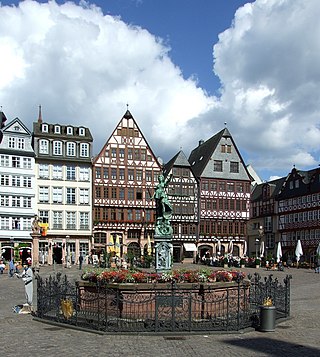

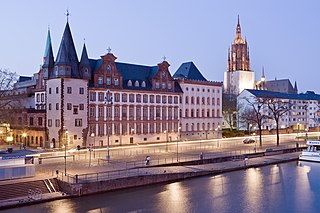
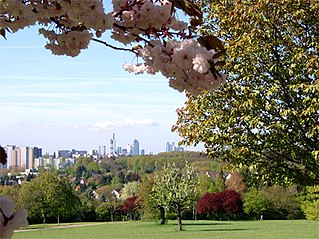
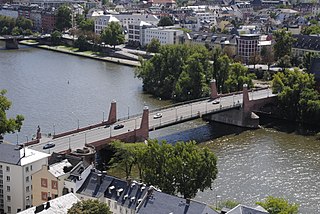
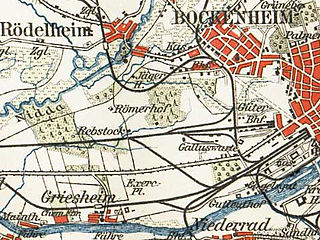
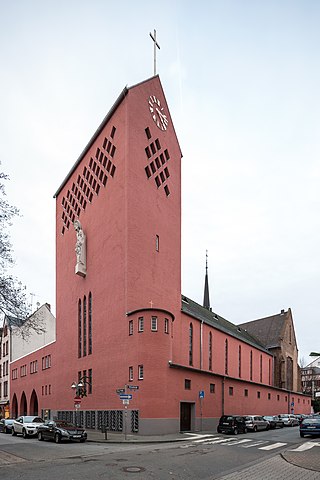
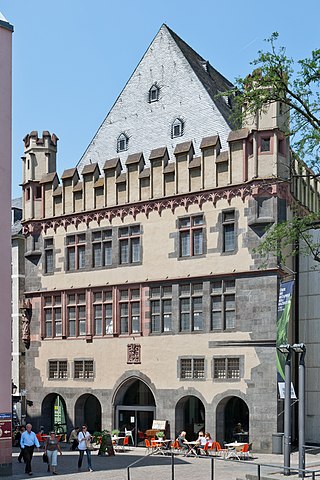

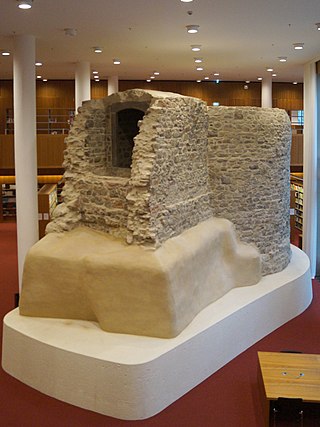
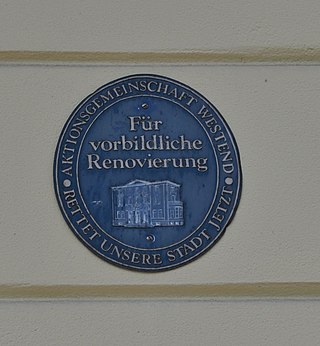
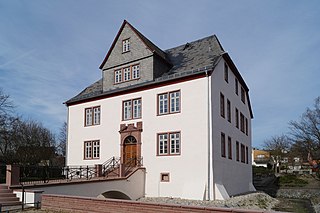
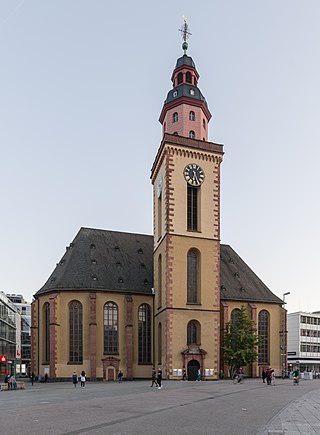
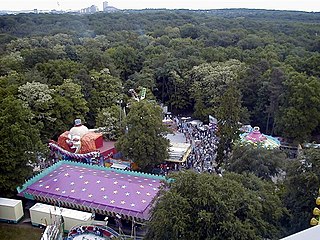
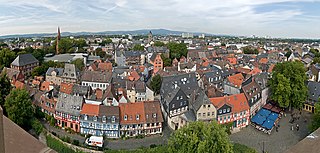
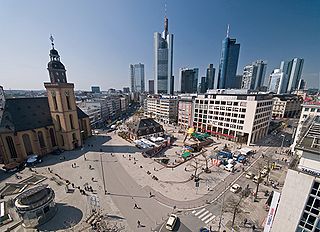
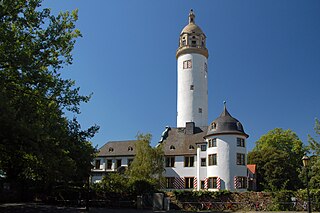
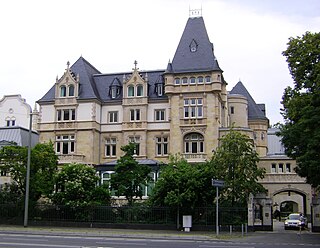
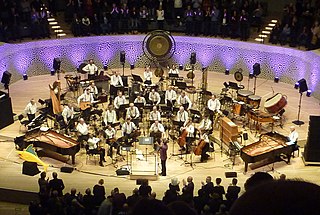
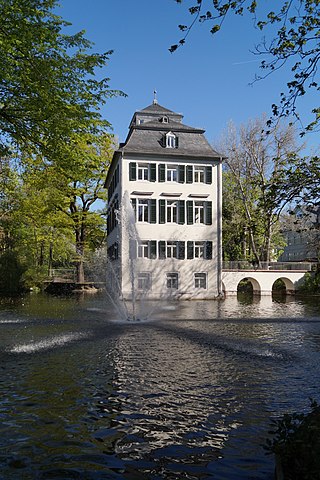
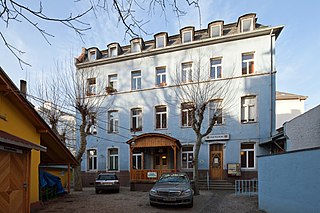
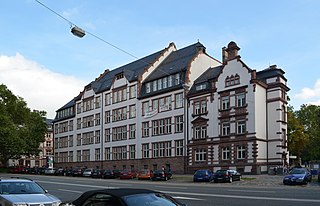
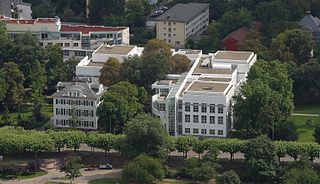
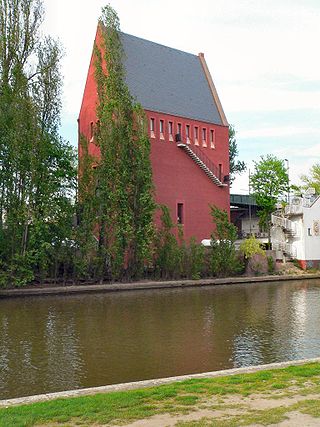

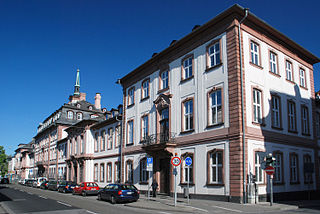
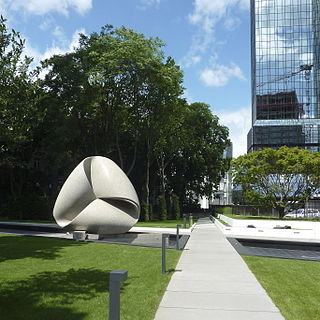


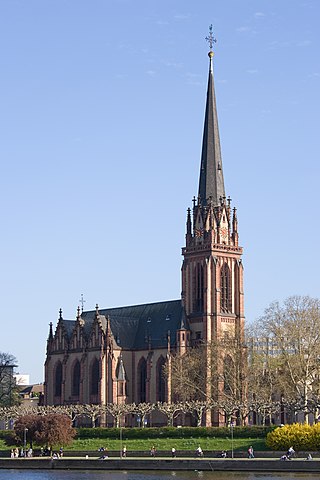
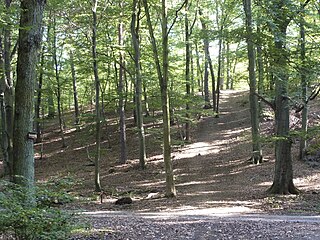
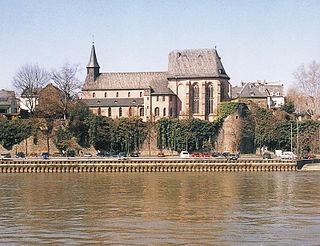
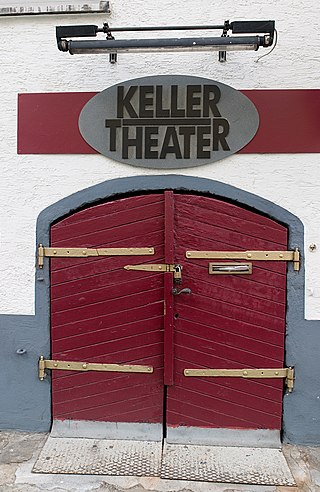

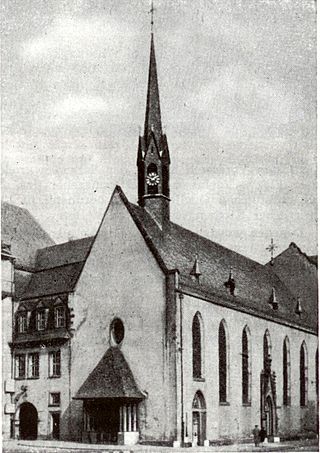
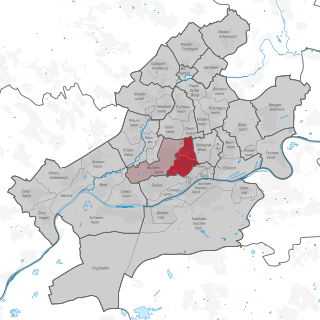
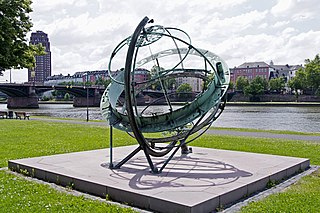
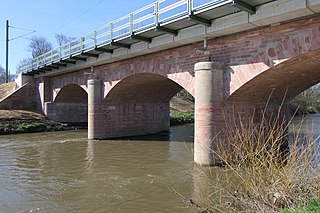
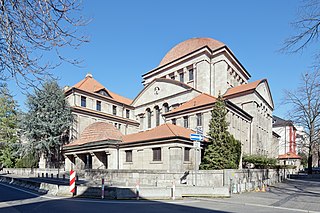
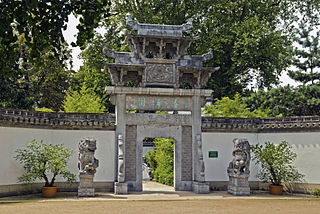
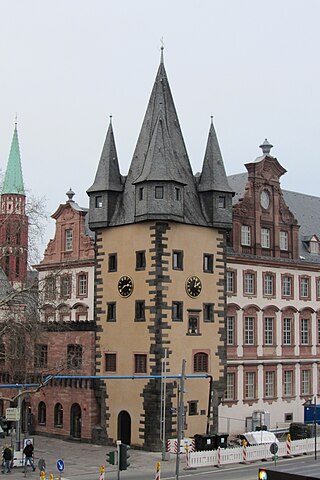
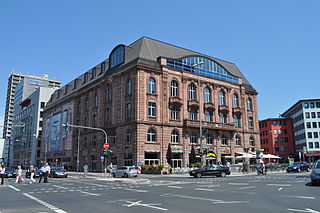
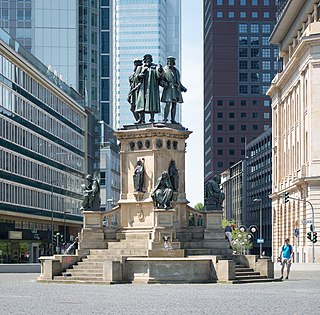
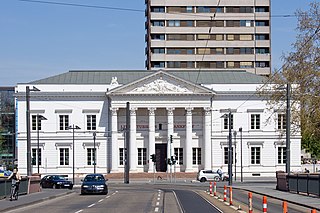
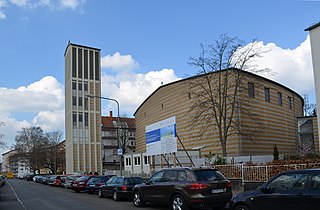
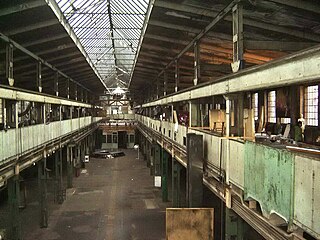
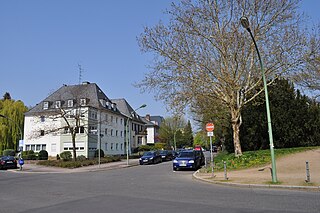
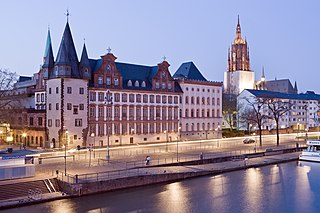
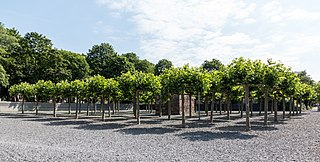
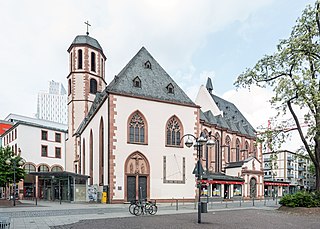
.jpg)
